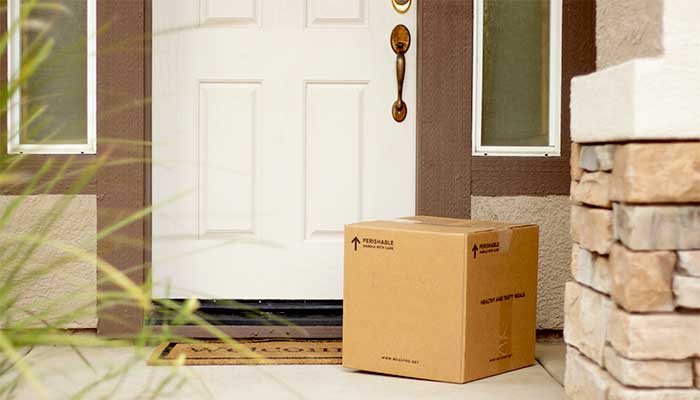
President
In my last article I mentioned the joint route process that the parties were about to sign.
Well, now that it has become a reality (TIAREAP), let me emphasize on few things that WE, as letter carriers, stopped doing either because we are in a hurry or because we are being rushed.
A few years ago, the USPS introduced an initiative called “Load truck” on your MMD for carriers to place parcels in their vehicles in “zones.” The Postal Service is placing the numbers 1 through 6 on the inside cargo areas of delivery vehicles. These numbers represent a carrier’s route divided into six equal sections. The Mobile Delivery Device (MDD) handheld scanner has been updated to include a “Load Truck” menu option. Using this feature while loading involves scanning each package before placing it in the vehicle into the appropriate “zone.” The MDD will visually and audibly provide the zone of the truck where the package should be placed for delivery. This feature, along with the package “Look ahead” feature of the MDD, will help carriers unfamiliar with certain routes keep track of the packages along their assigned routes. Through the MDD screen, Package Look ahead provides carriers with a manifest of all packages assigned to their route for the day, and as each package is delivered the manifest is updated providing which packages have yet to be delivered for the rest of the route and when.
If management tells you that you cannot not separate the parcels in delivery sequence as allowed by and provided for in section 322.31 of Handbook M-41 , City Delivery Carriers Duties and Responsibilities, please see your steward and ask for a grievance to be filed.
322.3 Parcel Post: Load parcel post directly into the vehicle from hampers or sacks. Normally separate the parcels in delivery sequence. Make a mental note of the first parcel delivery point. When this parcel has been delivered, make mental note of the next, and so on, until all parcels have been delivered. For any parcel that does not fit into the customer’s mailbox or parcel locker (when available), an attempt to deliver must be made at the customer’s door.
The scanner feature did not replace the handbooks and manuals. According to the M41, Section 322, carriers must load their parcels into delivery order. The language requires you to make a mental note of the first parcel delivery point, then once its delivered to make a mental note of the next delivery and so on, until all the parcels are delivered. You may be required to use the feature but still must comply with the handbook provisions.
Also if management is not allowing you to reverse a letter in their letter separation, to indicate where they have a SPR too large to be cased, as provided for in section 225.22 of Handbook M-41 that reads:
225.2 Modified One-Bundle System: Sort stiff cardboard articles, X-ray pictures, etc., and large newspapers and magazines on ledge, usually by relays on foot routes, and then route them in sequence of delivery. A letter may be reversed in the letter separation for a customer receiving a parcel or odd-sized article which cannot be routed in the letter separations. This will serve as a reminder when on the route that there is a large or odd-sized piece for customer.
Instead of reversing a letter carriers may be told to only use the Package Look ahead feature instead. If this instruction is given, as with the previous scenario, see a steward. If letter carriers are instructed to load or deliver their parcels in a manner inconsistent with the procedures outlined in Handbook M-41, carriers should follow those instructions but inform a steward to investigate and file a grievance(s). These procedures are important as they are the rules and done for service/efficiency reasons for the customer as well as delivery continuity.
As our market share of parcel delivery grows, some carriers may feel pressured to save time by leaving parcels on the doorstep or by simply leaving notices in the mailboxes for patrons to pick them up at the apartment manager’s office, without first attempting delivery at the patron’s door. In some locations, managers encourage this or, at a minimum, turn a blind eye to it, all in the name of “making the numbers.” Some carriers have bought into this dereliction of duty at their own risk. The regulations for parcel delivery are found in Section 32 of the M-41, a copy of which should be at every carrier case. For foot routes, M-39, Section 321. 4 states in part:
…If a parcel does not fit completely within the mail receptacle or parcel locker (when available), determine if someone is available at the address by ringing the doorbell or knocking on the door. If no one is available to receive the parcel, follow the procedures in 322.311 and 322.312. For motorized routes, M-39, Section 322.31 has virtually the same language. These instructions make it very clear that when a parcel is too large for the mailbox (or parcel locker), delivery must be attempted at the customer’s door. Only when no one is available to receive the parcel are carriers authorized to leave the parcel in a protected location or leave a notice.
Some carriers may not be happy with this, as it could add delivery time to their already overburdened route. It also could make some of their customers unhappy if they have to request re-delivery or go to the post office to retrieve parcels that the carrier used to leave on their doorstep. However, Article 28, Section 2 of the National Agreement provides:
Loss or Damage of the Mails: An employee is responsible for the protection of the mails entrusted to the employee. Such employee shall not be financially liable for any loss, rifling, damage, wrong delivery of, or depredation on, the mails or failure to collect or remit C.O.D. funds unless the employee failed to exercise reasonable care.
Since postal regulations prohibit it, leaving a non-carrier-release parcel on the doorstep could be considered a failure to exercise reasonable care and the carrier could be held financially liable if the parcel is stolen or damaged. Be a professional. Don’t take that chance. If it takes longer and you are on the ODL or WAL, enjoy the extra overtime. If you are not, take this into account when you fill out your 3996 to request auxiliary assistance.
Another issue that we deal with these days is the lack of time carriers are given to update their edit books. Some of our carriers with years of experience still do not know how to input addresses in the edit book or change a line of delivery. TIAREAP is a technology-based route adjustment, it is imperative that the edit books are up to date for all the routes that are in the selected zone. If you have a new house, business, condos, whatever, ask for time to input the data in and if you do not know, ask to be trained. It is not the supervisor job to update your edit book.
Also, always keep your scanner with you when performing your assigned duties. This means don’t leave your scanner in the truck when delivering parcels or walking into a business. This prevents the team inspecting your route from seeing how long delivering a particular business takes; instead, it makes it appear that you are stationary.
This process is not going anywhere, and only us as carriers can manage and safeguard our routes.
Until next time, in solidarity,
George Laham, President

